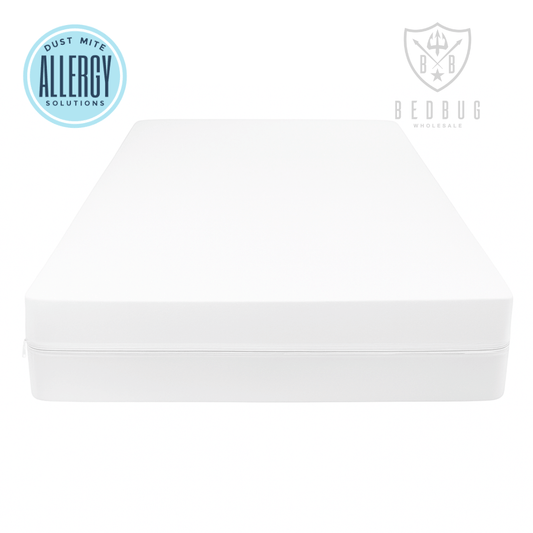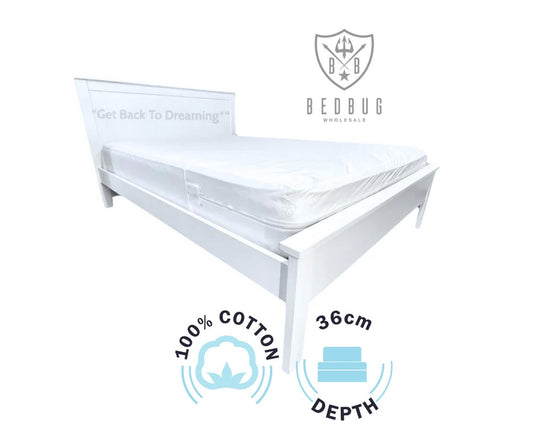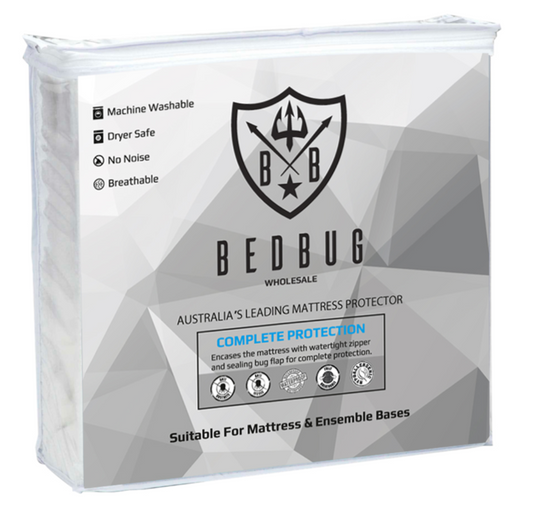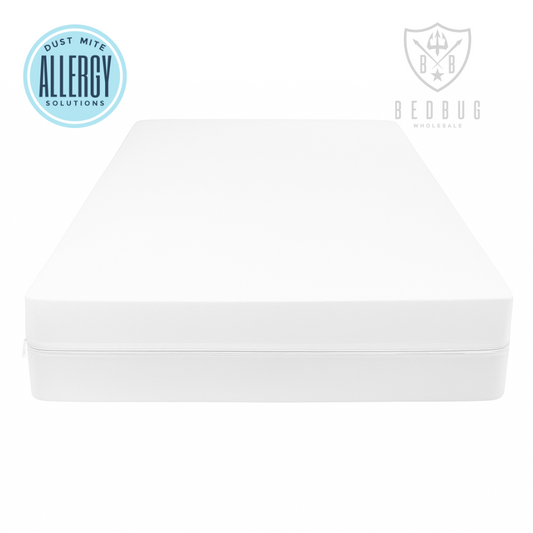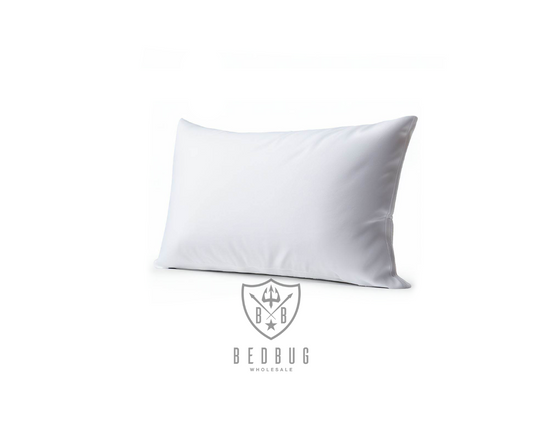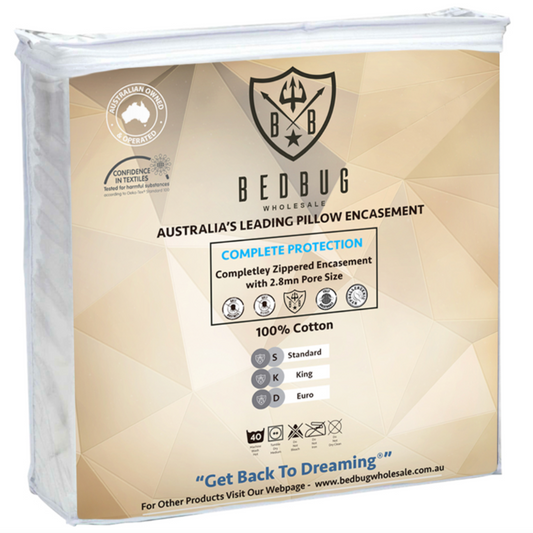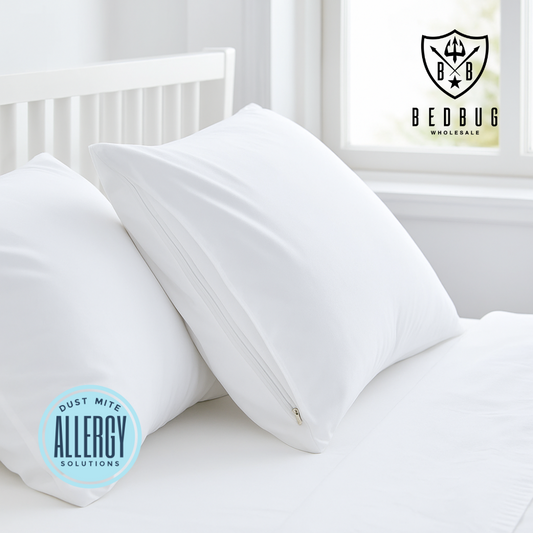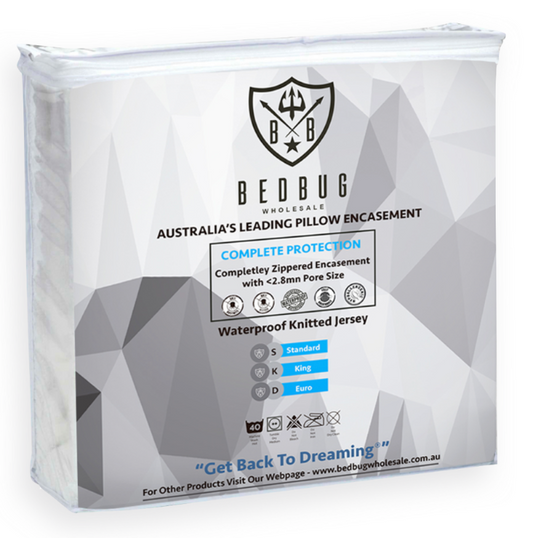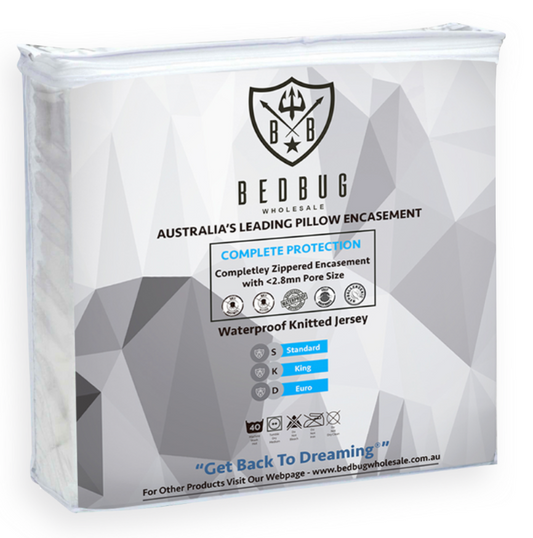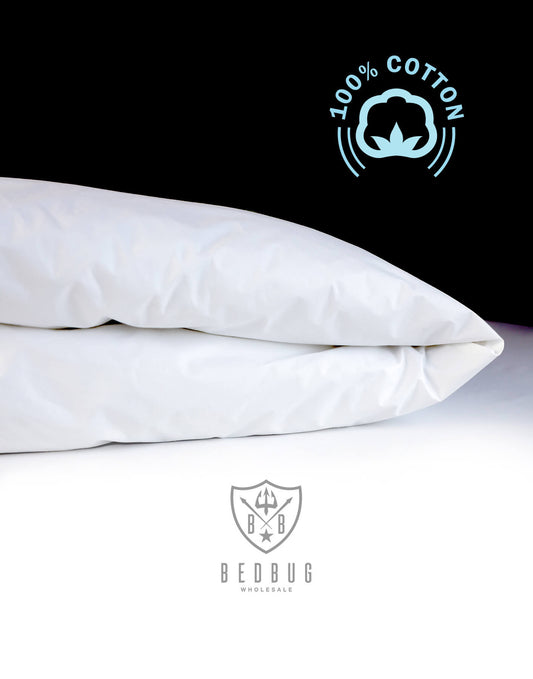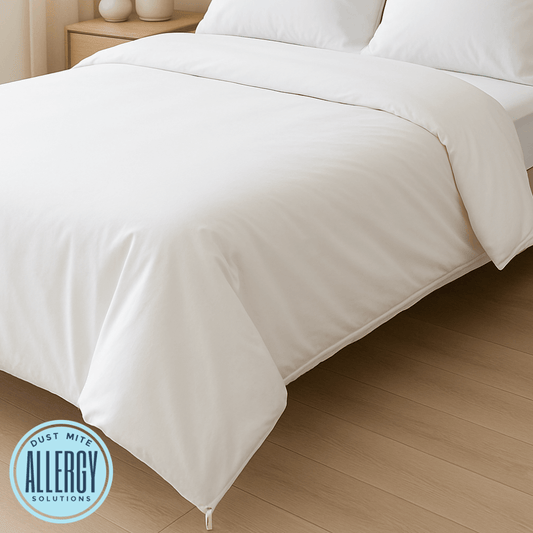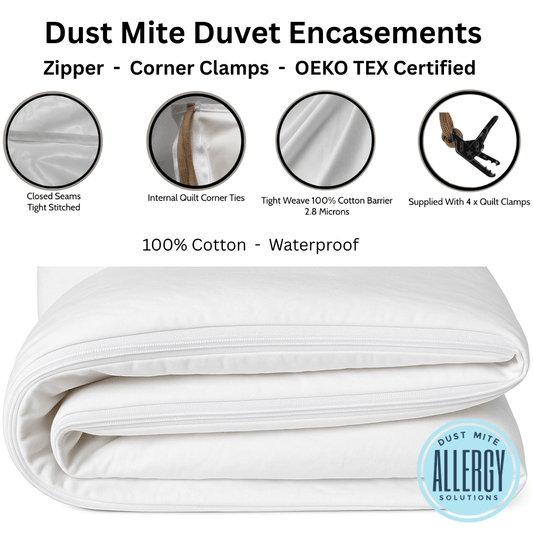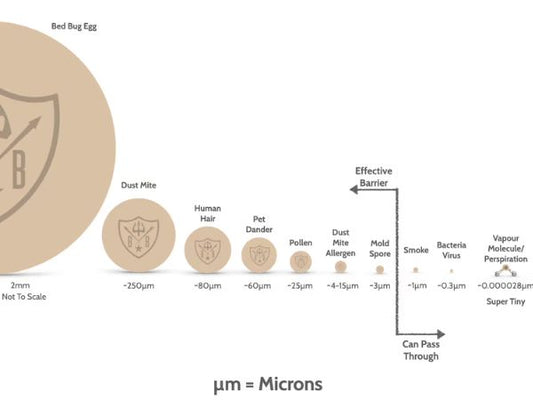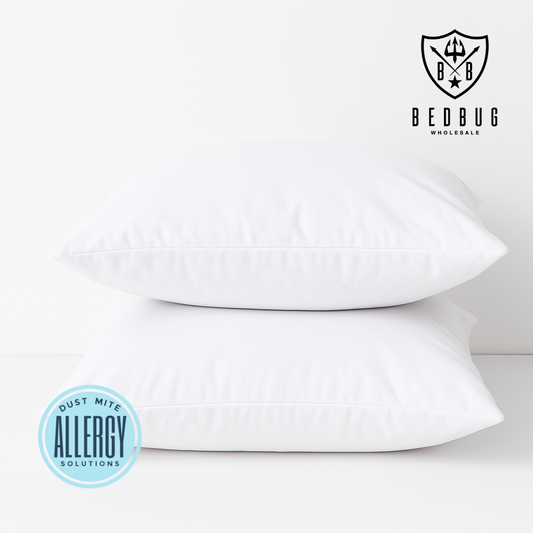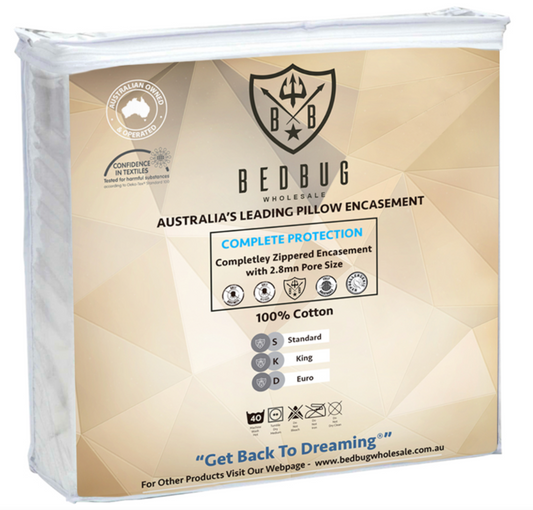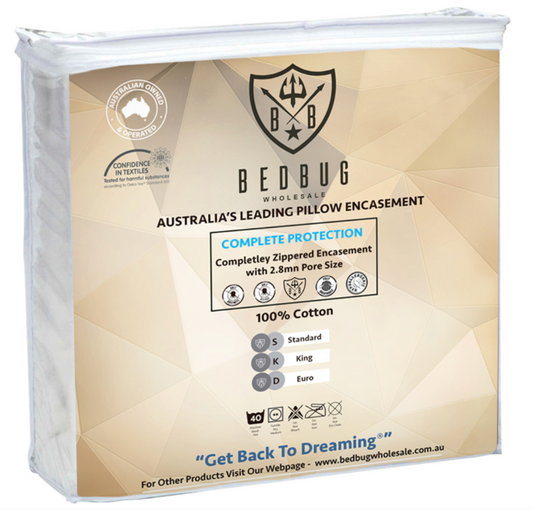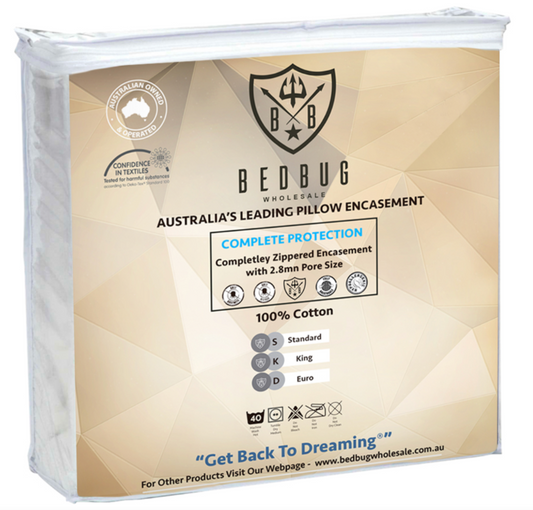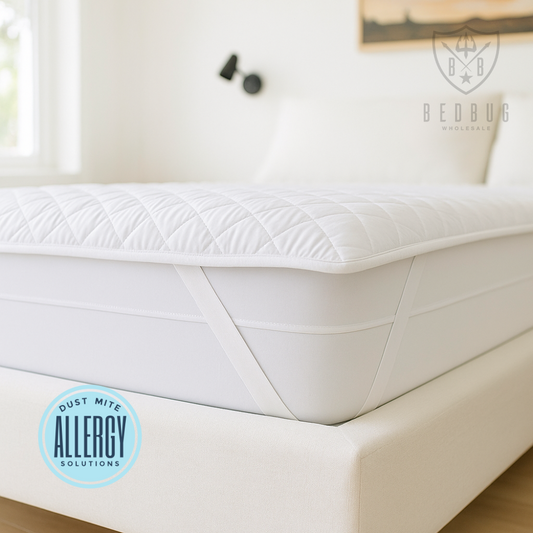-
100% Cotton Dust Mite Mattress Cover I 25 cm depth
Regular price From $64.00Regular priceUnit price per -
100 % Cotton Dust Mite Allergy Mattress Protector I Encasement I 35 cm Depth
Regular price From $97.50Regular priceUnit price per -
Waterproof Dust Mite Mattress Protector I Encasement I 18-24 cm Depth
Regular price From $62.00Regular priceUnit price per -
Waterproof Dust Mite Mattress Protector I Encasement I 24 - 33 cm Depth
Regular price From $62.00Regular priceUnit price per -
100% Cotton Dust Mite Allergy Pillow Protector | Standard/Queen Size | Zipper Closure
Regular price $29.00Regular priceUnit price per$31.00Sale price $29.00Sale -
100% Cotton Dust Mite Allergy King Pillow Protector | Zipper Closure
Regular price $31.00Regular priceUnit price per -
Waterproof Dust Mite Allergy Pillow Protector I Standard/Queen
Regular price $31.50Regular priceUnit price per -
Waterproof Dust Mite Allergy Pillow Protector I King
Regular price $31.50Regular priceUnit price per -
100% Cotton Dust Mite Allergy Quilt Cover With Zipper | Duvet Encasement
Regular price From $105.00Regular priceUnit price per -
Waterproof Dust Mite Quilt Protector With Zipper | Encasement
Regular price From $88.00Regular priceUnit price per -
100% Cotton Cot Mattress Protector
Regular price $71.50Regular priceUnit price per -
Waterproof Allergy Cot Mattress Protector
Regular price From $39.00Regular priceUnit price per -
Waterproof Dust Mite Pillow Cover | Euro | Zipper
Regular price $35.00Regular priceUnit price per -
100% Cotton Dust Mite Allergy Euro Pillow Protector | Zipper Closure
Regular price $35.00Regular priceUnit price per -
100% Cotton Dust Mite Allergy Body Pillow Protector | Zipper Closure
Regular price $65.00Regular priceUnit price per -
100% Cotton Dust Mite Allergy V Shape Pillow Protector | Zipper Closure
Regular price $43.00Regular priceUnit price per -
Dust Mite Mattress Protector - Mattress Mate™ I Slip On
Regular price From $40.00Regular priceUnit price per
Dust Mite Covers - FAQs
Are dust mite covers breathable, or can they trap heat?
Materials like 100% cotton allow air to circulate, reducing the chance of overheating while still blocking allergens effectively.
What are the signs that a dust mite cover needs to be replaced?
If the cover no longer fits snugly or shows signs of physical damage, it's time for a new one. Generally, replacing them every 1-2 years is a good practice.
Do dust mite covers affect the comfort or feel of the bedding?
While early versions of dust mite covers were somewhat stiff and noisy, advancements have led to softer, more flexible materials that maintain comfort.
Are there different types of dust mite covers for pillows, mattresses, and duvets?
Pillow, duvet and mattress covers have zippers and are made of tightly woven fabric to prevent mites and their waste from getting through.
Can dust mite covers completely eliminate dust mites from a bed?
Dust mite covers act as a barrier between you and the dust mites living in your mattress and pillows. While they won't kill the mites, they can help reduce allergen exposure. Read tips to get rid of dust mites.
A Comprehensive Guide to Dust Mite Covers
Find answers to all your questions in our comprehensive guide on dust mite covers.


